
Rediscovering Japan

Rediscovering Japan
Travel (Suwa/Chino (Nagano))

by tomizuta
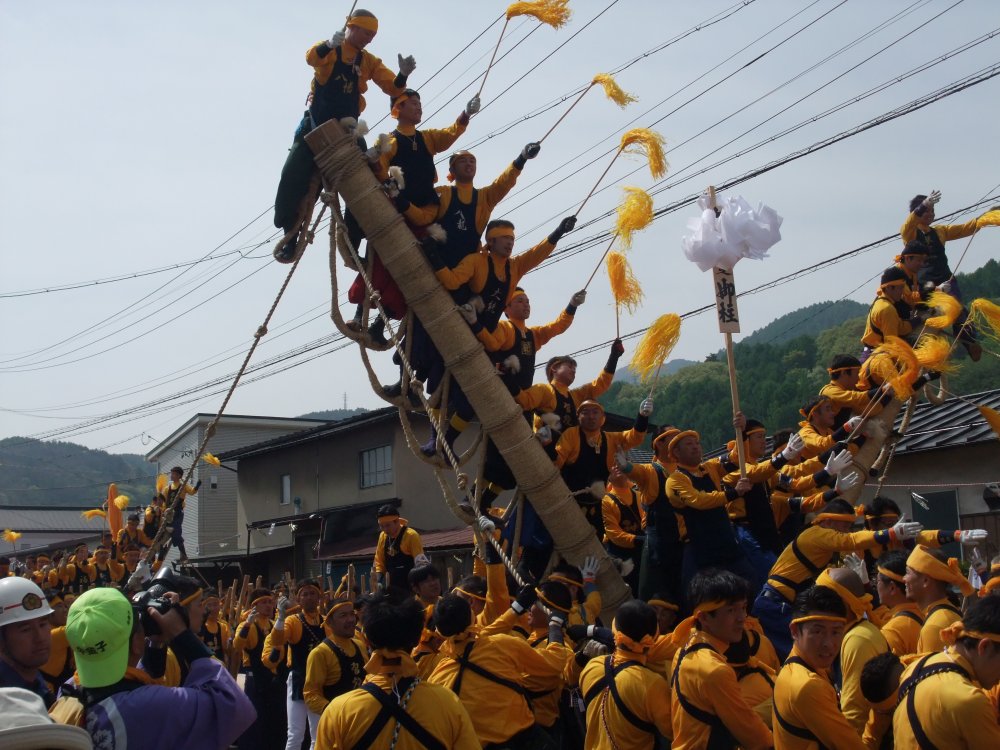
Onbashira-sai of 2015. One of 8 pillars being tugged to Kamisha for renewal.
The festival is held every 6 years.
Suwa Taisha is unique in that it is a group of four shrines two of which are adjacent to each other, and one pair sitting on the south of Lake Suwa and the other pair on the north. The pair located on the south side is Kami-sha (Upper Shrine) which has Mae-miya (Former Shrine) sitting approximately 1 kilometre west of Hon-miya (Main Shrine). It is not that Mae-miya is inferior to Hon-miya, but is so called because it predates Hon-miya. Shimo-sha (Lower Shrine) is on the other side of the lake, about 3 kilometres away. Shimo-sha has Aki-miya (Autumn Shrine) and Haru-miya (Spring Shrine) 500 metres to the north west. Suwa Taisha is as old as, if not older than Izumo Taisha in Shimane. It is said that one god clashed with the main family in Izumo and fled to Suwa, which is supposed to be the origin of Suwa Taisha.

View of Lake Suwa looking south from Aki-miya of Shimo-sha in Shimosuwa. Kami-sha is located on the opposite side of the lake.
Indeed there are many discoveries of people living in the Suwa and Chino
area from the Jomon era, pre-dating the Yayoi era when rice growing was
brought to Japan. The Venus of Jomon, a national treasure, was found at
the Togariishi pre-historic site. This is an earth baked doll of a pregnant
woman dating from the period between 3,000 to 2,000 B.C., evidencing that
the area is one of the oldest places where ancient Japanese ancestors had
settled. Chino City has adopted the Venus as the city logo.
Venus of Jomon from 3,000 to 2,000 BC is on display at the Togariishi Museum of Archaeology in Chino City.
There is a Sumo ring in Hon-miya of Kami-sha. My understanding is that Sumo bouts in Shinto shrines have its origins in harvest festivals in autumn. Probably it became customary to hold Sumo bouts in the presence of the emperor around the 9th century. With the rise of the samurai in the 11th century, sumo became an ideal training sport for them. In the Tokugawa period, the Tokugawa Shoguns also organized Sumo bouts in their presence. To this date sumo bouts in Shinto shrines are still a popular event, especially for children.
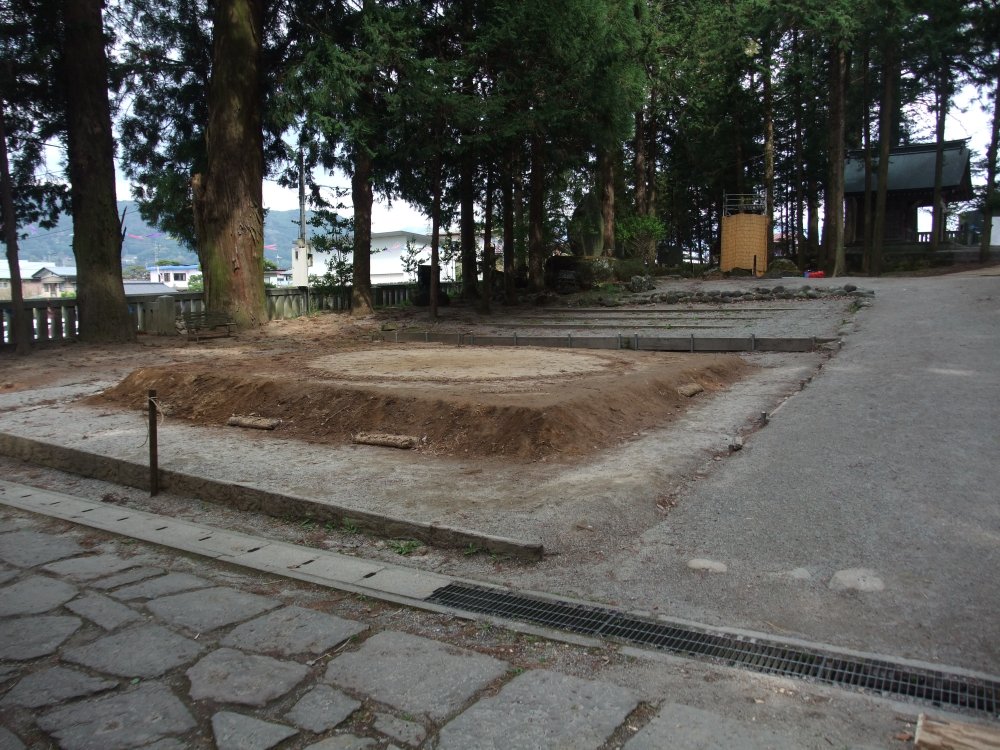
The Sumo bout ring in Moto-miya.
There are four sacred pillars in each of the four shrines. The pillars are gigantic in size, 17 metres long, 1 metre diameter and weighing as much as 10 tons and come from 150 year old firs in the local forests. These pillars are replaced every 6 years, as part of the periodic refurbishment of the shrines. I talked about refurbishment at major shrines in the article on Izumo Taisha. The reason or origin of the four pillars at each shrine is unclear. One theory is that since the refurbishment is much more frequent compared to Izumo Taisha (every 60 to 70 years), and the refurbishment is only of the Houden (Treasury building), that it is a symbolic replacement for an entire refurbishment.
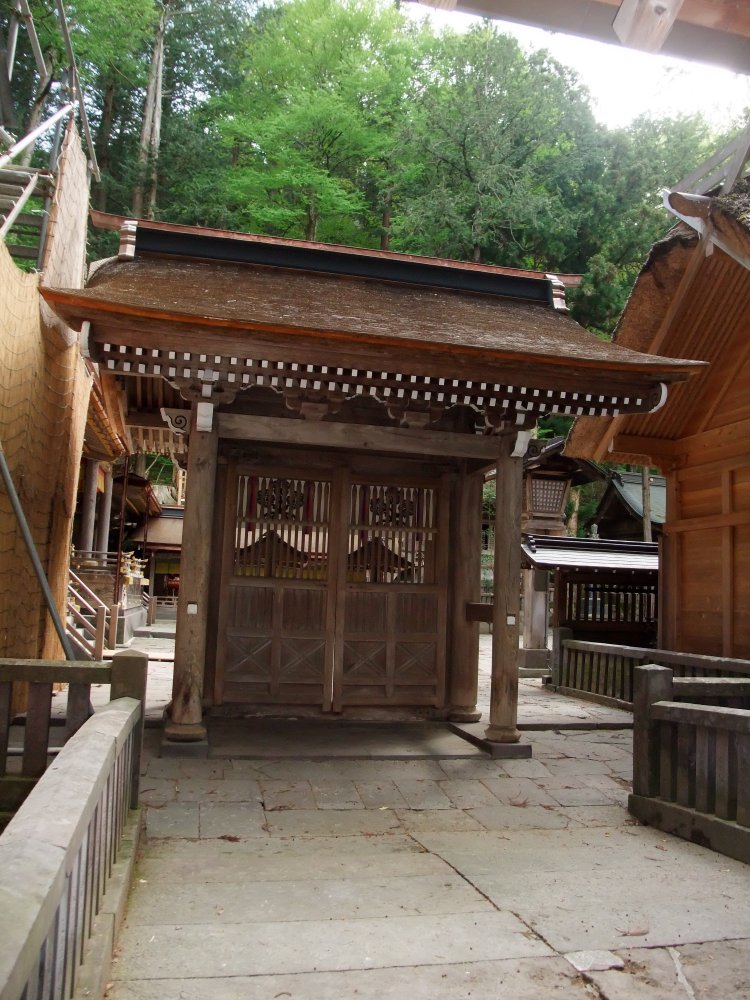
Shikyakumon (four legged gate) donated in the early 16th century by Ieyasu Tokugawa, founder of the Tokugawa military government. The God of Kami-sha will move from former Houden (right) to the new Houden( left) in 2016.
The entire process of the refurbishment is called Onbashira-sai (sacred pillar festival). The festival starts in April with the felling of the trees, dragging the pillars to the shrines, the refurbishment of the Houden, and local celebration at the minor shrines in autumn. It is a very popular event, where basically everybody in the local communities should take part, with tens of thousands of spectators.
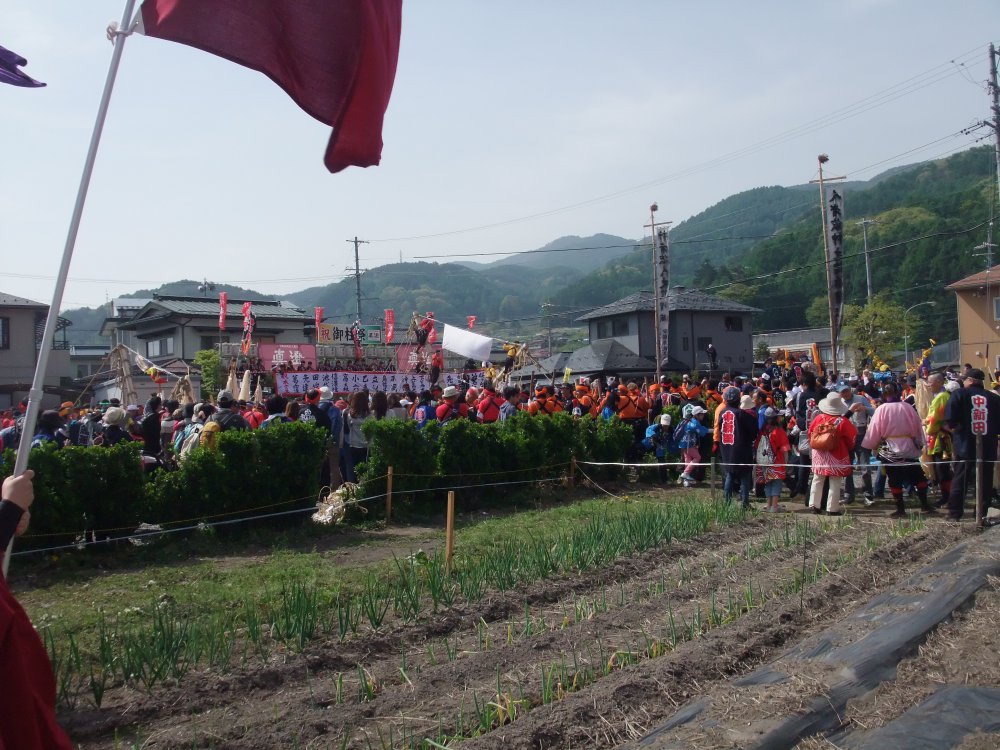
People wait for their cue to join and participate in the parade. It is a must for everybody in the communities to take part.
The Suwa district was a main junction for travelers in the Edo era. Nakasendo, the main road to Kyoto was joined by Koshukaido from Yamanashi at Shimo (lower) Suwa. From there the road went west to Shiojiri on the north west of Lake Suwa and then south east towards Kyoto.
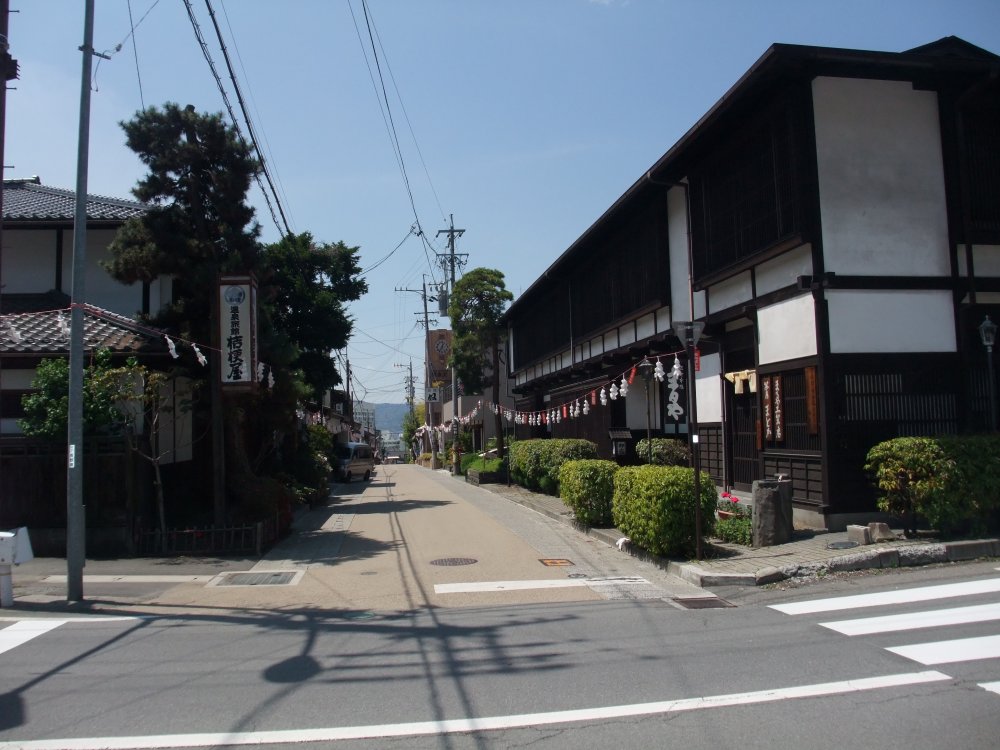
Close to Akimiya in Shimosuwa. Koshu-kaido from the left joined Nakasendo going to Kyoto ahead and coming from Saku and Edo from the right. Shimosuwa was a main junction in the Edo era.
Lake Suwa is the largest lake in Nagano. It is about 15 kilometres to circle
the lake shores, and the lake is at 760 metres above sea level. The lake
freezes during the cold winter. If the winter is cold and ice thick enough,
as the ice partly melts during the day and then grows in the evening, the
freezing creates an ice ridge across the lake. This phenomenon is called
Omiwatari, meaning crossing of the god. In a year where Omiwatari is observed,
an Omiwatari ritual is conducted by the Shinto priest of Yatsurugi shrine.
He and representatives of the supporters of the shrine go along the ice
ridge across the lake and inspects both sides of the lake. They go back
to the shrine to report to the gods of the Omiwatari, and then evaluate
the fortune for that year of harvest, rainfall and natural events. They
then report to Kamisha of Suwa-Taisha.
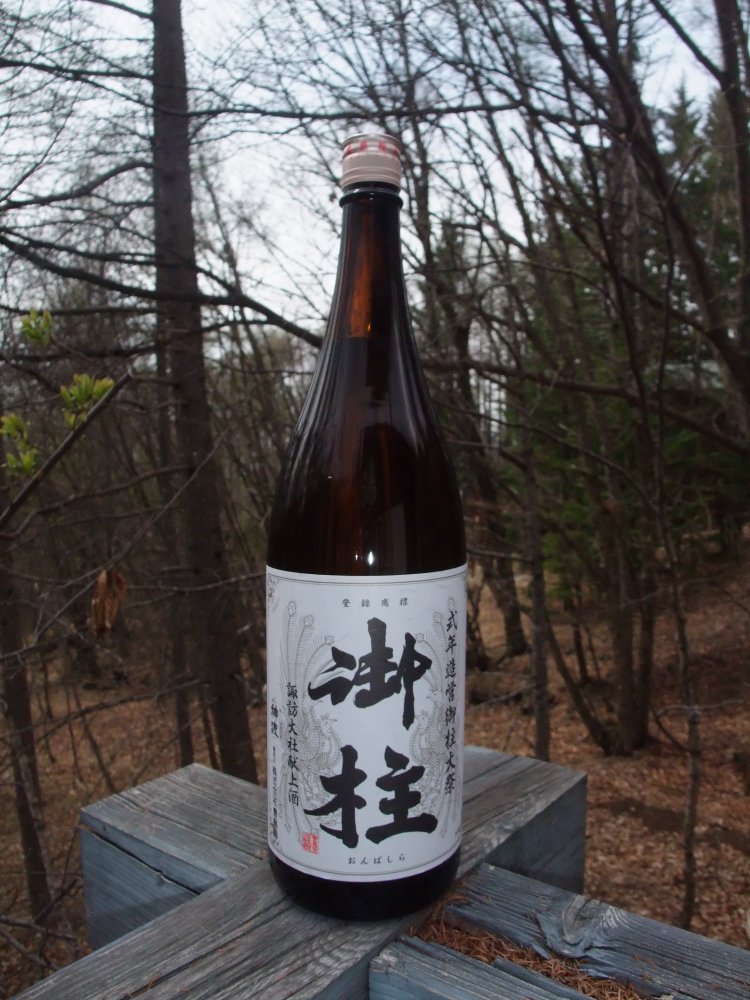
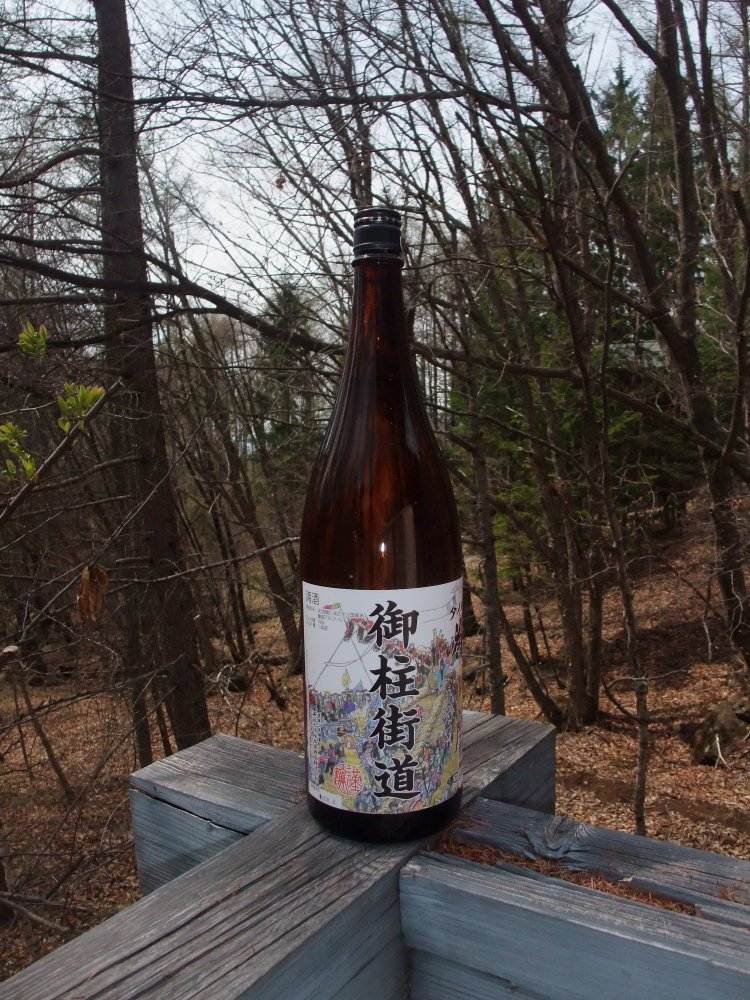
Special brews of Miwatari (Shimosuwa) and Daiyagiku (Chino) to celebrate Onbashirasai in 2016.
As mentioned above, Suwa was a junction of the Nakasendo route from Edo to Kyoto. On our way to Inuyama, we paid a brief visit to Naraijuku. There were 69 lodging villages between Edo and Kyoto, Shiojiri was the 30th and Naraijuku, now part of Shiojiri was the 34th counting from Edo. The lodging houses at Naraijuku are very well preserved and as such, have been designated as Important Preservation District for Groups of Historic Buildings. Sadly, the sake brewery in the middle of the village has closed down, although there are still signs of the sake they used to brew and sell in the village.
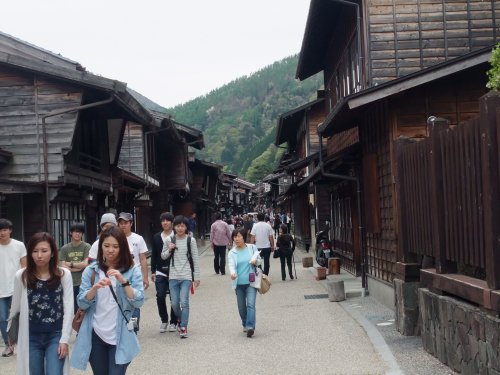
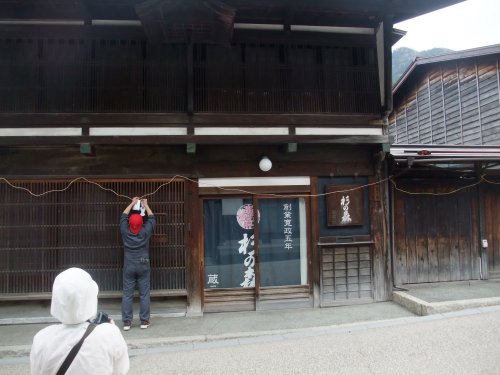
There were many visitors to Naraijuku (left). A discontinued Sake brewery established 1793.
We had soba with tempura for lunch at a restaurant north of Naraijuku. The tempura was local wild vegetables and a local river fish called Iwana, similar to a trout. We seldom come across Iwana tempura, but it certainly goes well with soba.
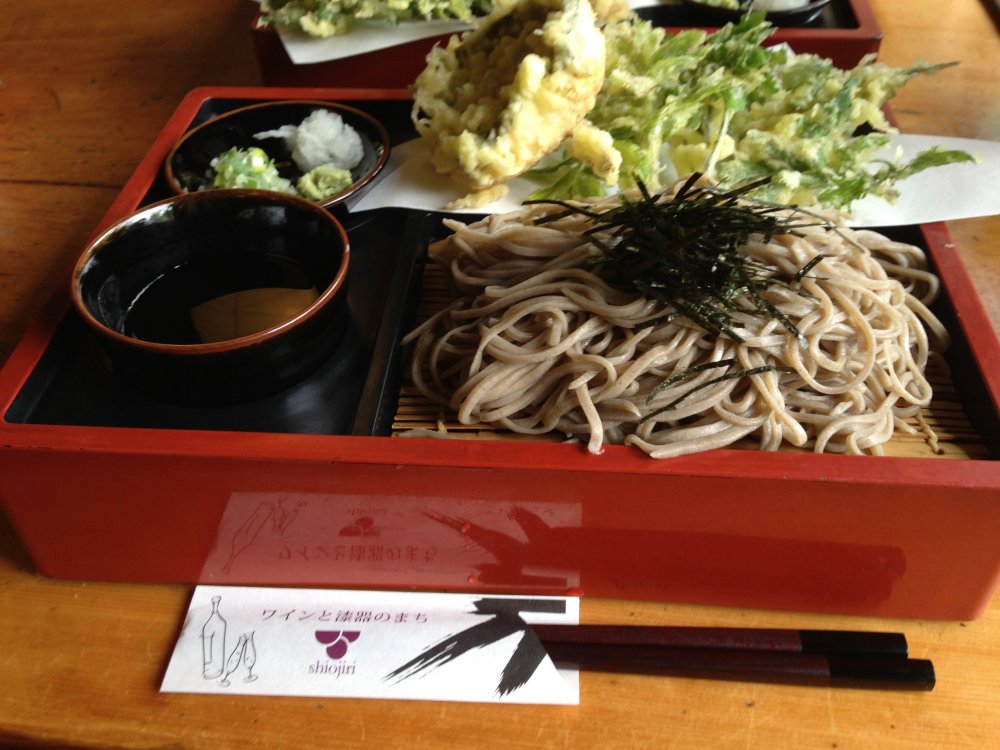
We had soba with tempura of local IWANA (middle) and wild vegitables in a restaurant north of Naraijuku.